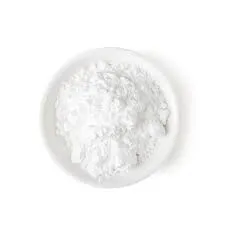Water Treatment Plant Chemicals Essential Components for Safe Water
Water treatment plants play a crucial role in ensuring that the water we consume is safe, clean, and free from harmful contaminants. The processes involved in water purification are complex and require a variety of chemicals designed to treat water effectively. This article will delve into the types of chemicals used in water treatment plants, their functions, and their importance in providing potable water.
1. Coagulants The First Step in Water Treatment
One of the primary chemicals used in water treatment is coagulants, such as aluminum sulfate (alum) and ferric chloride. These substances help in the clumping together of small particles and impurities found in water. When introduced into the water, coagulants neutralize the charges on suspended particles. As a result, particles aggregate into larger groups called flocs, which can then be removed through sedimentation or filtration. This process is vital, as it significantly reduces the levels of turbidity and other contaminants present in the water.
2. Disinfectants Killing Pathogens
Disinfection is a crucial step in ensuring that the water is safe for human consumption. Chlorine, chloramines, and ozone are commonly used disinfectants in water treatment plants. Chlorine remains the most widely used disinfectant due to its effectiveness in killing bacteria, viruses, and other pathogens. However, the use of chlorine has raised concerns regarding the formation of disinfection by-products (DBPs), which can be harmful. As a result, many plants are increasingly adopting alternative methods, such as ozone treatment, which is efficient at killing microorganisms without leaving harmful residues.
3
. pH Adjusters Maintaining Water Qualitywater plant chemicals

The pH level of water is significant for both the effectiveness of disinfection and the overall quality of the water. Chemicals like sulfuric acid and sodium hydroxide are frequently used to adjust the pH to optimal levels. A balanced pH is crucial, as extreme pH levels can lead to corrosive water that may damage infrastructure and can also affect the efficacy of disinfectants. Therefore, maintaining proper pH levels is essential for a successful water treatment program.
4. Flocculants Enhancing the Sedimentation Process
Following coagulation, flocculants are added to the water to enhance the sedimentation process. These chemicals, such as polyacrylamides, assist in further aggregating the flocs formed during coagulation. By promoting the settling of larger particles, flocculants help clarify the water, allowing for efficient removal of solids during the filtration process. The use of flocculants is particularly important for raw water sources that may have high levels of suspended solids.
5. Corrosion Inhibitors Protecting Infrastructure
Another significant category of chemicals used in water treatment is corrosion inhibitors. These substances, including orthophosphates and silicates, are essential in preventing the corrosion of pipes and infrastructure that carry treated water. By minimizing corrosion, these chemicals help prolong the lifespan of water distribution systems and ensure that the water remains safe and uncontaminated by metals leaching into the supply.
Conclusion The Importance of Chemicals in Water Treatment
The role of chemicals in water treatment plants cannot be overstated. They are pivotal in transforming raw, potentially hazardous water into a safe and potable supply for communities. Each chemical serves a specific purpose, whether in coagulation, disinfection, pH adjustment, flocculation, or corrosion inhibition. With ongoing advancements in technology and regulatory measures, water treatment plants continue to adapt and evolve in their use of chemicals, ensuring that access to clean and safe drinking water remains a top priority worldwide. Ultimately, the effective use of these chemicals is essential for public health and environmental protection, reinforcing the critical role that water treatment plants play in modern society.

